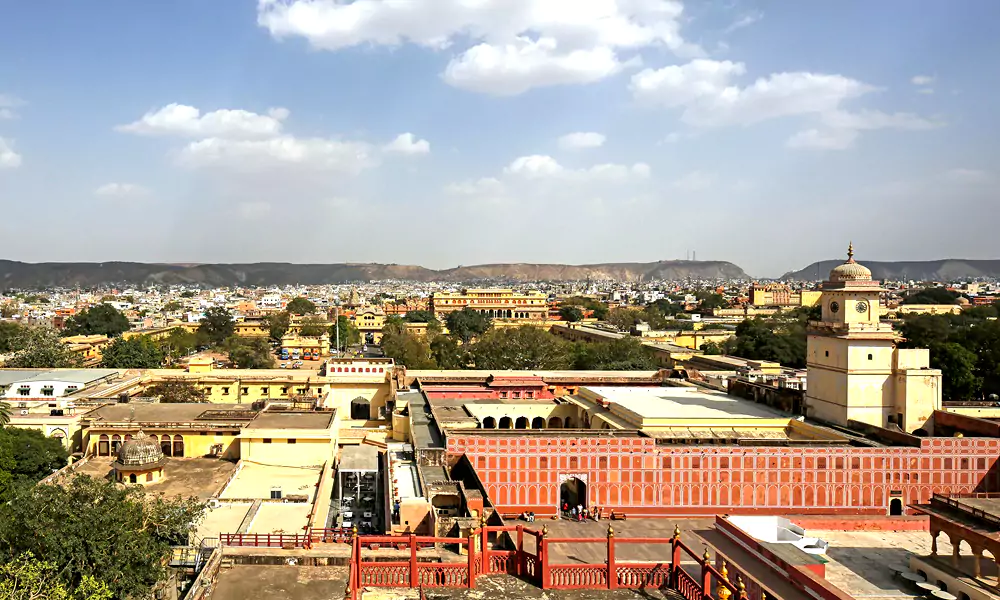
Nestled in the heart of Jaipur, the City Palace stands as a magnificent testament to the grandeur and opulence of Rajasthan’s royal heritage. This architectural marvel, a blend of Mughal and Rajput styles, has been a symbol of power, wealth, and artistic excellence since its construction. The City Palace not only reflects the rich history and culture of Jaipur but also offers visitors a glimpse into the royal lifestyle that once flourished here.
Timings and Ticket Price
Visitors can explore the City Palace between 9:30 AM to 5:00 PM, providing ample time to immerse in its grandeur. The ticket prices vary depending on the areas you wish to explore. General entry fees for adults are INR 200, while students with valid IDs can enter for INR 100. For those interested in a more comprehensive tour, the Royal Grandeur ticket, which includes access to the museum and private quarters, is INR 3000 for adults and INR 1500 for students.
History
Origins and Construction
The City Palace between 1729 and 1732, during the reign of Maharaja Sawai Jai Singh II, the founder of Jaipur. The palace complex is a royal residence and administrative centre, reflecting the vision and grandeur of the Maharaja. Sawai Jai Singh II was an astute ruler and a patron of arts and sciences, which is evident in the meticulous planning and architectural brilliance of the palace.
Evolution and Additions
Over the centuries, successive rulers of Jaipur made significant contributions to the palace, adding new structures, gardens, and courtyards. These additions have enriched the palace, making it a sprawling complex of buildings, each with its unique charm and historical significance. The fusion of Mughal and Rajput architectural styles is a testament to the cultural amalgamation that defines the heritage of Rajasthan.
Architecture
Layout and Design
The City Palace complex is an extensive layout of gardens, courtyards, halls, and structures, all designed with exquisite craftsmanship. The palace is divided into several sections, each serving different purposes and showcasing various aspects of royal life.
Mubarak Mahal
One of the most striking buildings within the City Palace complex is the Mubarak Mahal. Built by Maharaja Madho Singh II in the late 19th century, this “Welcome Palace” served as a reception centre for visiting dignitaries. The structure is a fine example of Indo-Saracenic architecture, combining elements of Islamic, Rajput, and European styles.
Chandra Mahal
The Chandra Mahal, a seven-story structure, is the most prominent and grandest building within the City Palace. It served as the residence of the royal family and offers a panoramic view of the city and the surrounding areas. Each floor of the Chandra Mahal has its unique name and significance, with the topmost floor Mukut Mahal. The interiors of Chandra Mahal with beautiful paintings, floral decorations, and intricate mirror work.
Diwan-i-Khas and Diwan-i-Aam
The Diwan-i-Khas (Hall of Private Audience) and Diwan-i-Aam (Hall of Public Audience) are significant parts of the palace complex. The Diwan-i-Khas, with its marble-paved galleries and intricate decorations, was used for private meetings and gatherings. The Diwan-i-Aam, on the other hand, served as a venue for public audiences and official functions. These halls are adorned with exquisite chandeliers, artworks, and historical artefacts.
Pritam Niwas Chowk
Pritam Niwas Chowk, or the Inner Courtyard, is famous for its four beautifully decorated gates, each representing a different season. These gates with intricate carvings and vibrant colours, showcasing the artistic excellence of Rajasthani craftsmen. The Peacock Gate, representing autumn, is particularly renowned for its stunning design and craftsmanship.
Significance
Cultural and Historical Importance
The City Palace is not just an architectural marvel; it is a repository of history and culture. It has witnessed numerous historical events and has been a centre of political and cultural activities for centuries. The palace houses a vast collection of royal artefacts, manuscripts, costumes, and artworks, providing a deep insight into the rich heritage of Rajasthan.
Symbol of Royalty
The City Palace stands as a symbol of the royal lineage and the legacy of the Kachwaha Rajputs. It reflects the power, wealth, and grandeur of the rulers of Jaipur. The palace complex, with its opulent structures and exquisite decorations, offers a glimpse into the lavish lifestyle of the royal family.
Best Time to Visit
The best time to visit the City Palace is during the cooler months from October to March. The weather during this period is pleasant, making it ideal for exploring the palace and other attractions in Jaipur. The palace is open to visitors from 9:30 AM to 5:00 PM, allowing ample time to explore its various sections and learn about its history and significance.
How to Reach
- By Air: The nearest airport to Jaipur is the Jaipur International Airport, located approximately 13 kilometres from the City Palace. The airport is well-connected to major cities in India and abroad. From the airport, visitors can hire a taxi or use public transport to reach the City Palace.
- By Train: Jaipur Junction is the main railway station in Jaipur, situated about 5 kilometres from the City Palace. The railway station is well-connected to major cities across India. From the station, visitors can hire a taxi or take an auto-rickshaw to reach the palace.
- By Road: Jaipur is well-connected by road to major cities in Rajasthan and neighbouring states. The city has a good network of state highways and national highways. Visitors can drive to Jaipur or use bus services provided by the Rajasthan State Road Transport Corporation (RSRTC) and private operators.
Nearby Attractions
1. Hawa Mahal
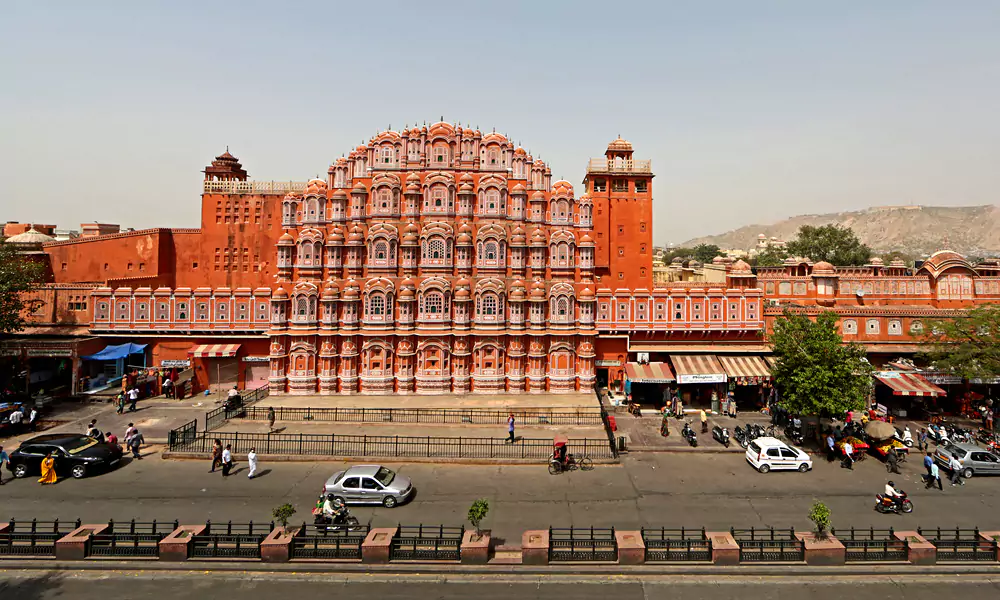
Located just a short distance from the City Palace, the Hawa Mahal, or the Palace of Winds, is another iconic landmark of Jaipur. This five-storied structure, with its intricately designed façade, served as a vantage point for the royal ladies to observe street festivals and daily life without being seen.
2. Jantar Mantar
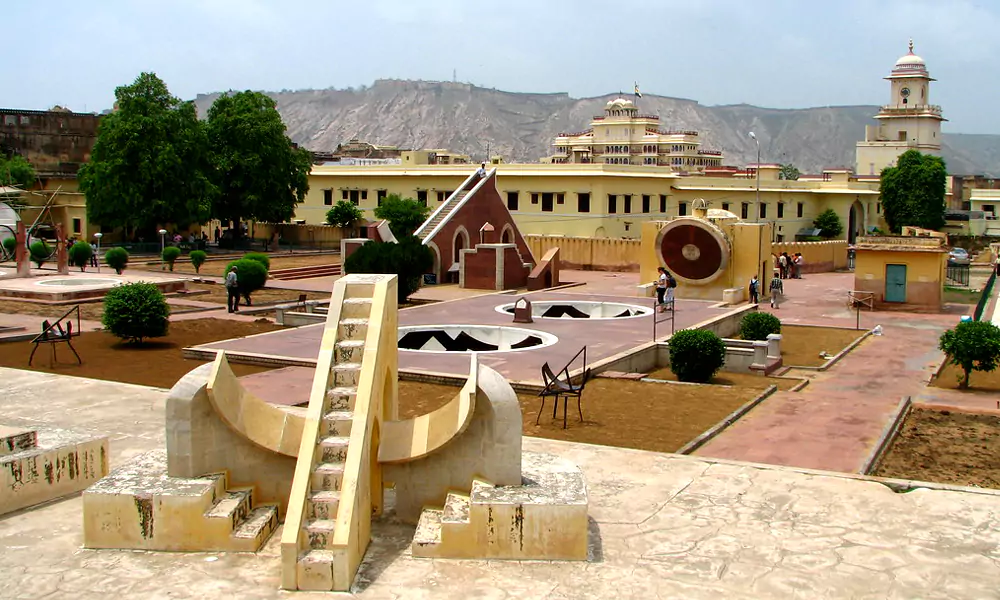
The Jantar Mantar, an astronomical observatory built by Maharaja Sawai Jai Singh II, is a UNESCO World Heritage Site and is located near the City Palace. It houses a collection of architectural and astronomical instruments, showcasing the scientific prowess of the 18th century.
3. Jal Mahal
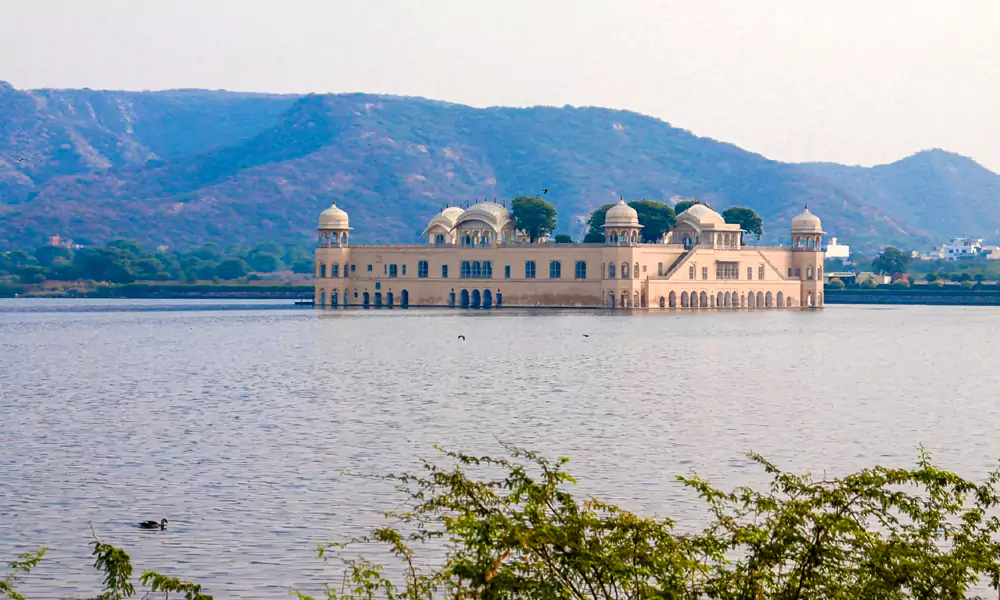
The Jal Mahal, or the Water Palace, is a stunning palace situated in the middle of the Man Sagar Lake. Its unique location and architectural beauty make it a must-visit attraction in Jaipur. The palace appears to float on the lake, offering a picturesque view, especially during sunset.
4. Albert Hall Museum
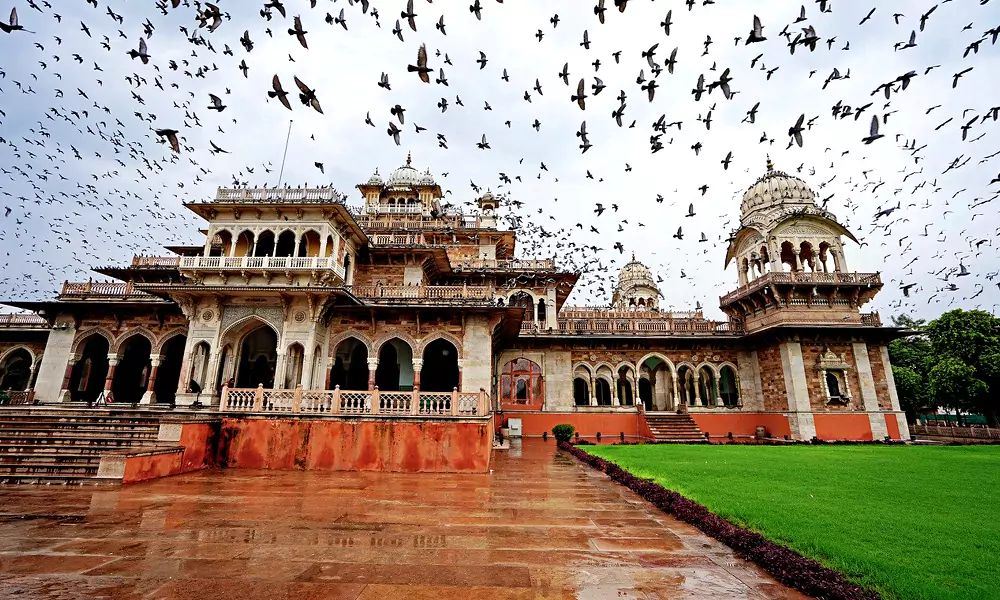
The Albert Hall Museum, located in the Ram Niwas Garden, is the oldest in Rajasthan. It houses an extensive collection of artefacts, including sculptures, paintings, decorative arts, and musical instruments. The museum’s Indo-Saracenic architecture adds to its charm and historical significance.
Travel Tips
Dress Code and Behavior
While visiting the City Palace, it is advisable to dress modestly and respectfully, considering the cultural and historical significance of the place. Comfortable footwear is recommended as there is a lot of walking involved. Visitors should also be mindful of their behaviour and avoid causing any damage to the historical structures.
Guided Tours
Opting for a guided tour can enhance the experience of exploring the City Palace. Knowledgeable guides provide valuable insights into the history, architecture, and significance of various sections of the palace. Audio guides are also available for those who prefer a self-paced tour.
Photography
Photography in most parts of the City Palace, but it is advisable to check for any restrictions, especially in areas housing delicate artefacts and artworks. Visitors should respect any signage indicating restricted photography zones.
Frequently Asked Questions (FAQs)
The City Palace is famous for its exquisite architecture, historical significance, and rich collection of royal artefacts and artworks. It showcases a blend of Mughal and Rajput styles and offers a glimpse into the royal lifestyle of Jaipur’s rulers.
Yes, there are cafes and eateries inside the City Palace complex where visitors can enjoy refreshments and traditional Rajasthani cuisine. These cafes offer a relaxing ambience amidst the historical setting.
Yes, tickets for the City Palace can booked online through the official website or various travel portals. Online booking helps avoid long queues at the entrance.
The City Palace has made efforts to improve accessibility for differently-abled visitors, with ramps and designated pathways. However, some areas with stairs and narrow passages may be challenging to access.
The City Palace occasionally hosts cultural events, exhibitions, and festivals that showcase Rajasthani art, music, and traditions. Visitors can check the official website or local listings for information on upcoming events.
Conclusion
The City Palace of Jaipur is not just a historical monument; it is a living testament to the grandeur and heritage of Rajasthan. Its magnificent architecture, rich history, and cultural significance make it a must-visit destination for anyone exploring the Pink City. From the opulent Chandra Mahal to the intricately designed gates of Pritam Niwas Chowk, every corner of the City Palace tells a story of royal splendour and artistic excellence. A visit to this iconic palace is a journey through time, offering a deeper understanding and appreciation of India’s royal heritage.
